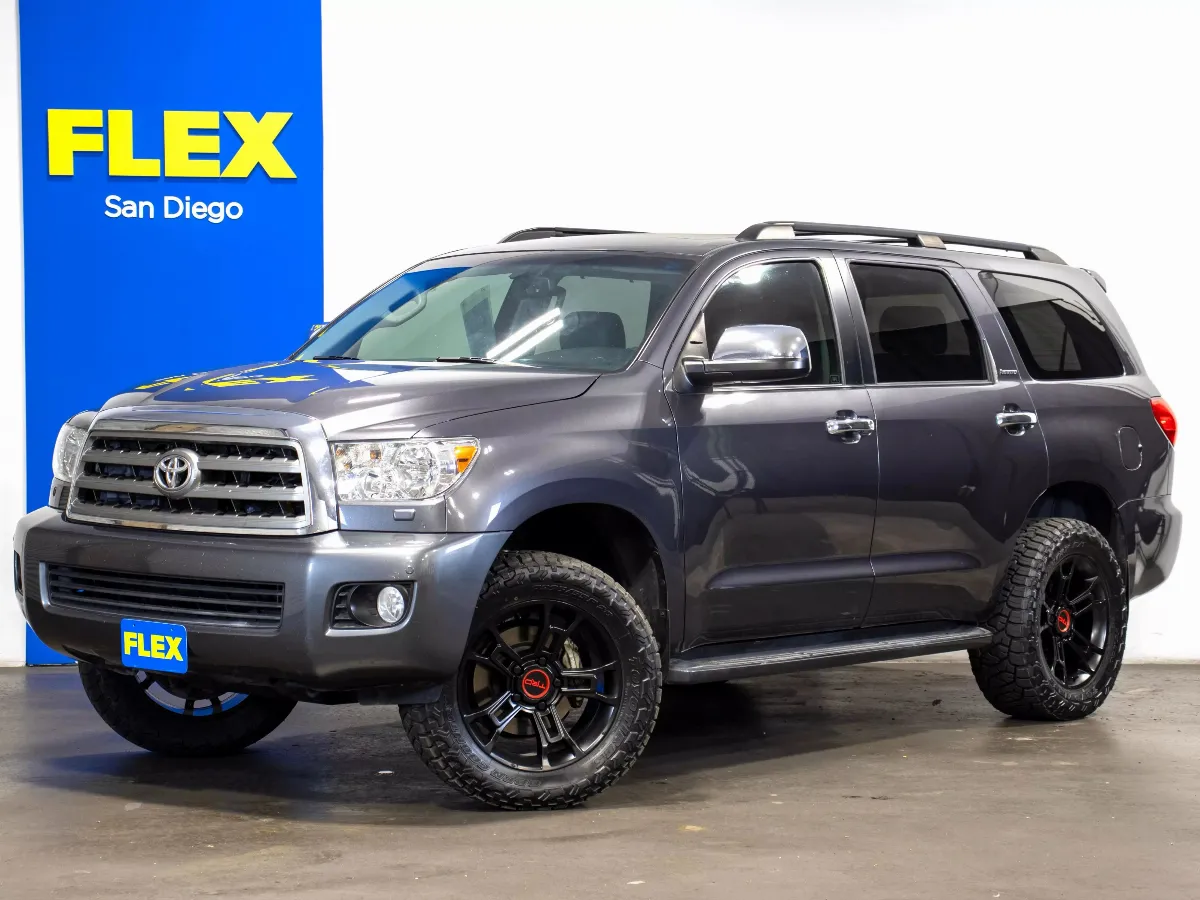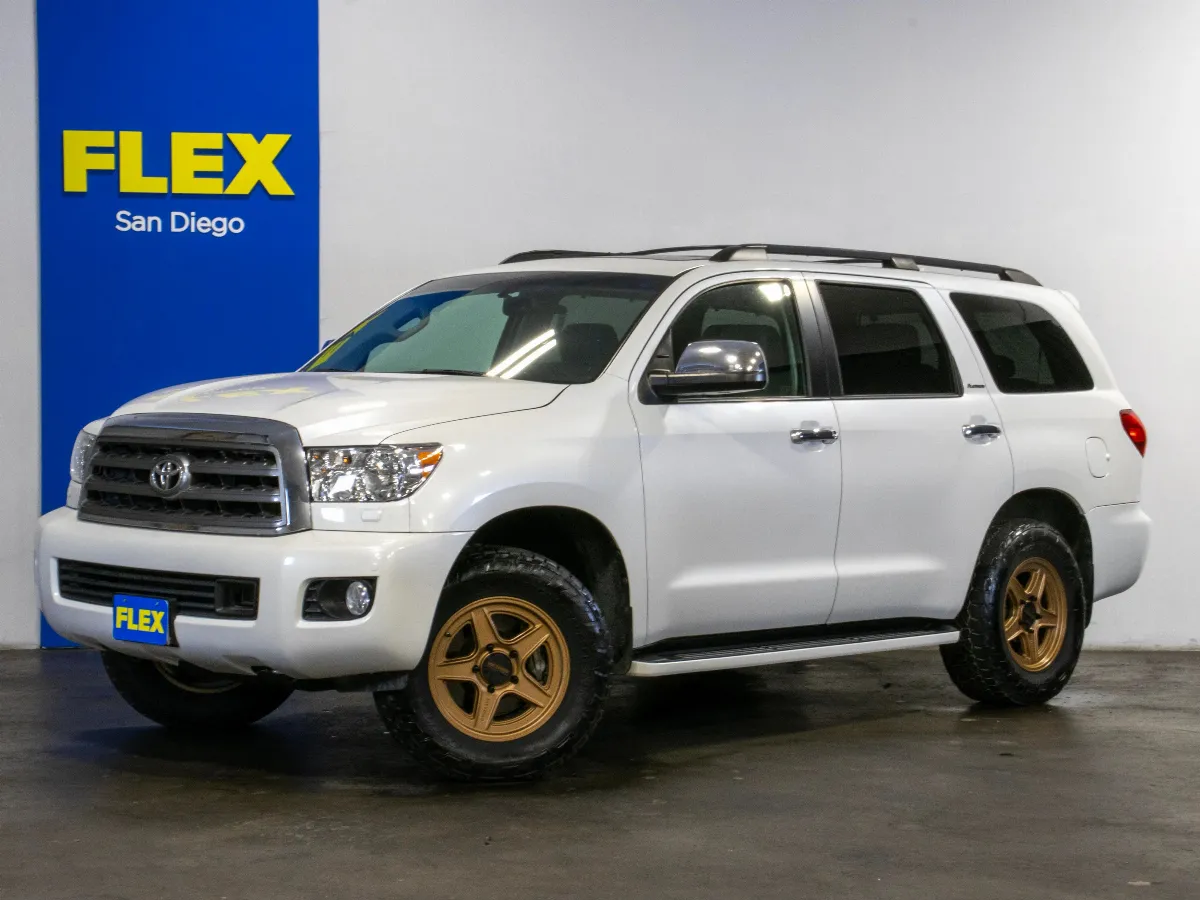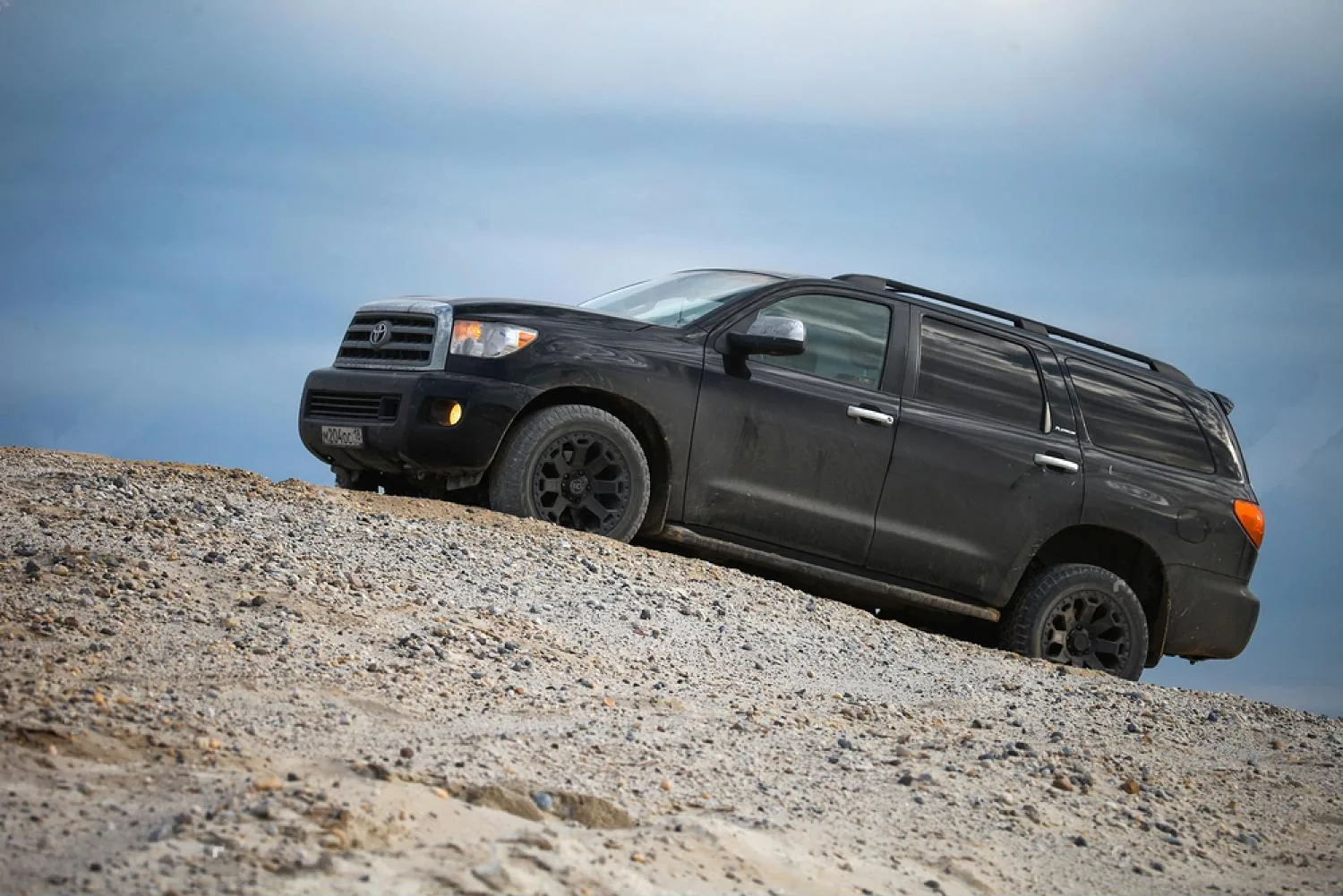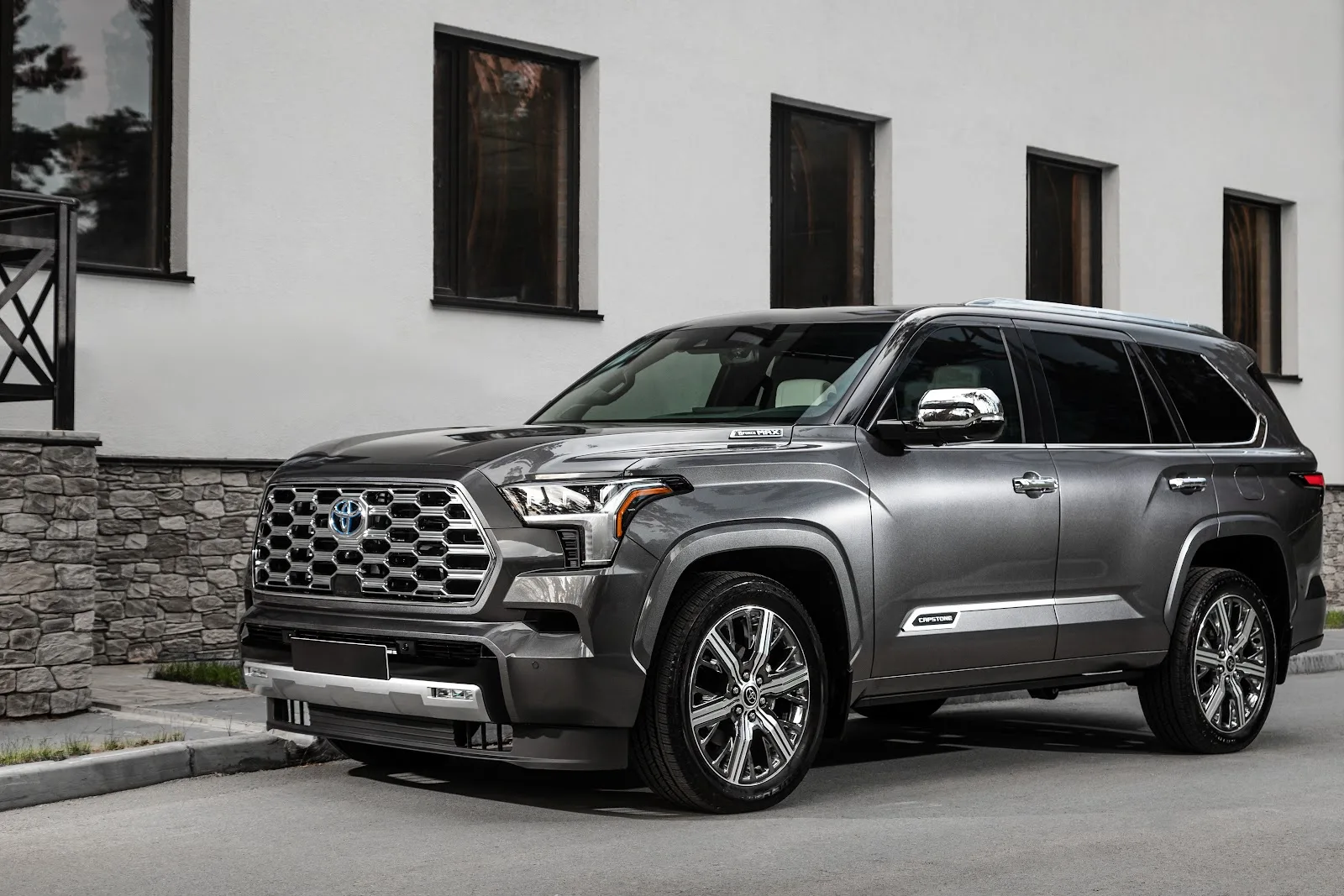Sequoia is a great full-size SUV. Be it’s towing capacity or fuel economy, every aspect of the Sequoia outshines its competition. It’s been out there in the market for a while. As it’s a beefy machine with tons of electrical and mechanical components, you may come across some common problems.
According to our in-depth research, testing, and owners’ feedback, Sequoia’s some generations had rust parts and oil leakages.
But don’t worry. We are here to help you get rid of all common problems with Sequoia. So, let us explore this helpful guide!

Do Toyota Sequoias Have Issues?
Sure, the Toyota Sequoia can get some problems as it ages, like any other SUV. It’s a super reliable SUV, but not without flaws. Many owners have talked about issues with the oxygen sensor, ball joints, rust, oil leaks, and more. While not usual, some models of the Toyota Sequoia do face engine problems.
Often, older ones get more beat up. So, check the Toyota Sequoia’s reliability year by year before you buy. Knowing issues with Toyota Sequoia SR5 trims helps too. Makes a smarter choice when searching for used SUVs.
Common Problems with Toyota Sequoia
Now, let us discuss various Sequoia problems along with their solutions. So, here are a few of them:
1: Oxygen Sensor Failure
Your Sequoia’s exhaust oxygen sensor measures oxygen levels. Failure may cause your SUV to consume too much fuel. Bad gas use, loud engine sounds, or warning lights on the dashboard might pop up. It’s a usual thing for Toyota Sequoias, mainly ones that have driven more than 100,000 miles.
Possible Solution:
Check your oxygen sensor with a mechanic. It was not too expensive or time-consuming to replace it. Getting a new sensor can make your engine run better and help you get better gas mileage.
2: Rusting Issues
Rust is a common problem reported by Sequoia owners, especially older ones. It shows up on the frame, doors, fenders, and around the wheel wells a lot of the time.
If you live somewhere that gets a lot of snow or rain, this rust can spread quickly. When roads are icy, salt makes things worse.
The good news is that newer Sequoia trims are much improved. There aren’t any significant rust issues reported by recent Sequoia owners.
Possible Solution:
Wash the underside of your Sequoia often. Do this once a year to keep it from rusting. If you see rust, you should treat and clean it right away. Do not wait, because rust spreads quickly and can hurt important parts of the SUV.

3: Ball Joint Noise Issue
Hearing clunking sounds when you turn or go over bumps? It might be the ball joints. This problem happens a lot with Toyota Sequoia’s especially the SR5 trim. Worn-out ball joints can make it hard to steer and wear down tires faster. That could lead to bigger problems if it is not fixed.
Possible Solution:
Check your car’s suspension during regular service. If the mechanic spots any bad or loose ball joints, fix them fast. You’ll ride smoother and be safer with new joints.
4: Camshaft Tower Leakage
The components of your engine that are responsible for timing and oil flow are under the control of the camshaft tower. In certain Sequoias, there are problems with oil leaking from this particular area.
There may be oil spots under your car or a burning oil smell coming from the engine bay. Most likely to happen with older models or ones that have a lot of miles on them.
Possible Solution:
Take your car to the nearest Toyota dealership if you see any leaks. If you change the cover or seals around the camshaft block, the leak will go away. The change will also keep your engine from getting hurt in the long run.
5: Leaked Exhaust Manifold
Starting the car might make a ticking sound if there is a crack in the exhaust manifold. Further, it could make the engine less powerful and use more gas. One serious but not very common Toyota Sequoia engine problem is this. Unfixed problems can lead to bigger ones in the future.
Possible Solution:
If you hear strange noises, have your exhaust system checked out. Changing the manifold can make your engine run better and cut down on pollution.
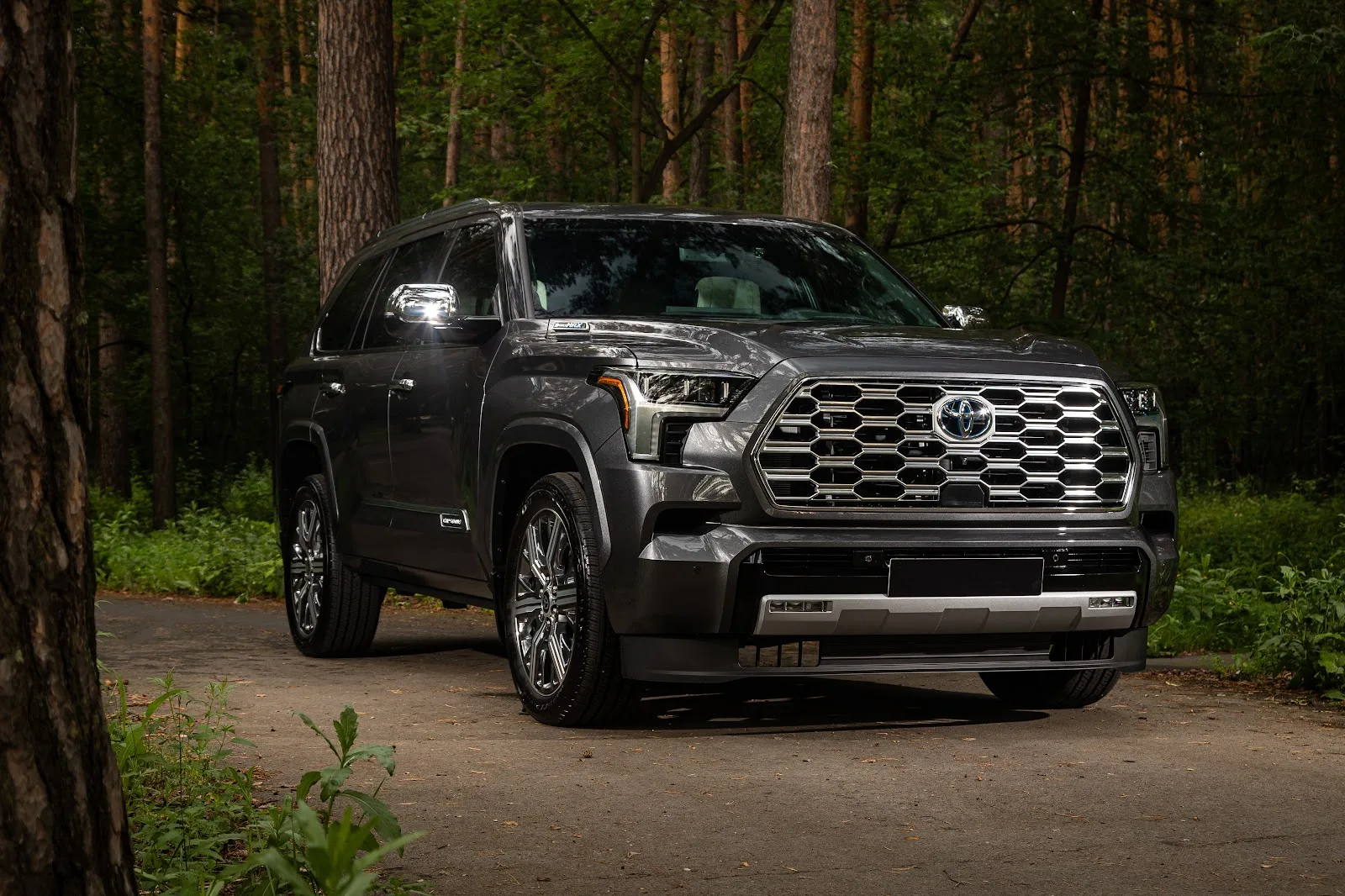
Final Thoughts
The Toyota Sequoia is a tough and handy SUV. But even though SUVs have weak points. Knowing the common problem with the Toyota Sequoia can help you take care of it. Own a Toyota Sequoia SR5? Keep an eye on the suspension, rust, and oxygen sensor. Thinking about getting a used one? You should check which Sequoia years to avoid.
People love their Sequoias and drive them for years. The Toyota Sequoia’s reliability by year is superior to most other SUVs in its class.
The Toyota Sequoia is now available at Flex Automotive. We sell and customize various types of Toyota SUVs and pickup trucks, including but not limited to 4Runners, Land Cruisers, Lexus GX, Tacomas, and Tundras. Get your lovely Toyota pickup truck or SUV customized by experts at Flex Automotive.
Frequently Asked Questions
1: What is the life expectancy of a Toyota Sequoia?
Look after your Sequoia well, and it might last over 300,000 miles. Some folks have even hit 400,000 miles.
2: Why are Sequoias so rare?
Toyota does not make as many Sequoias as it does other SUVs. Because many people keep them for a long time, not many are sold again.
3: How much should I pay for a Toyota Sequoia?
Prices change every year. One that has been used can cost anywhere from $10,000 to $45,000. Brand-new ones cost more than $70,000 each.
4: Are Toyota Sequoias expensive to repair?
These problems are not too expensive to fix. Trouble does not happen very often, and parts are easy to find.




